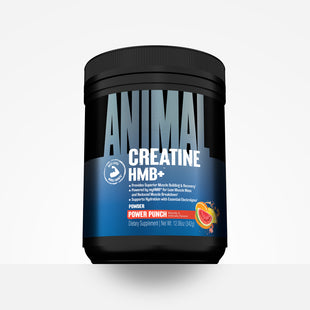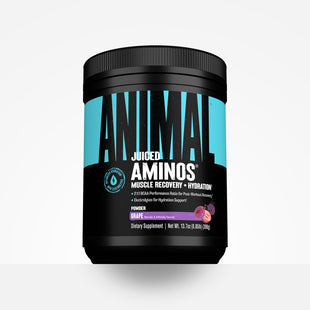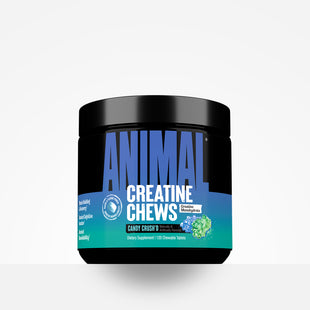If you’re reading this, chances are you train hard. You show up, you put in the work, and you live this lifestyle. But here’s the thing—effort, without, direction won’t take you where you want to go. You can grind for months, even years, and still be stuck in the same place if your plan doesn’t match your body’s needs.
I’ve seen it in myself and in countless lifters I’ve coached: You get locked into a routine because it’s familiar. But training isn’t religion—it’s problem-solving. Your body adapts to everything you throw at it. The same plan that built you last year might be holding you back now.
The question is—are you honest enough to see the signs?
Here are five clear indicators it’s time to switch things up, and how to break a plateau.
1. You’re in a Weightlifting Plateau, and Your Physique Development Has Stalled
If you’re eating in a calorie surplus, training hard, and your physique looks exactly the same month after month… your body has adapted.
Muscle is expensive tissue. Your body won’t build more unless it’s forced to. This means either your training stimulus is no longer enough, or your post workout recovery isn’t keeping up with what you’re trying to do.
Sometimes your training volume might need to get increased and a new split structure will need to happen. Over time, weak points will need more specialized attention. If you’ve been running a general split like upper/lower/off/upper/lower/off/off and your chest isn’t progressing like your other body parts, it might be time to adjust. Something like upper/lower/off/upper/lower/chest/off puts a full day toward bringing up that lagging muscle group without sacrificing recovery.
In practice: I’ve had phases where I looked the same for 8–10 weeks straight despite eating more. My pressing strength was going up, but the muscle wasn’t showing the change as my volume was still too low. Adjusting my split to give priority muscles extra exposure and recovery—while pulling back on body parts that were already ahead—lit the fuse again.
2. You’re Deloading Every Two Weeks
If you’re so beat up that you need a deload every other week—or you’re dealing with recurring injuries—you’re not “hardcore.” You’re under-recovering.
Training is stress. Recovery is where you grow. If the stress outweighs your ability to adapt, you’ll slide backward.
Signs you’re under-recovering:
- Constant joint pain or tendon aches
- Poor sleep despite fatigue
- Soreness that lingers more than 3–4 days
- Constantly working around exercises to find a position that works pain free
This usually means one of two things:
- Your training volume or frequency is too high for your current muscle recovery capacity
- You’re stacking too many high-fatigue movements without balancing intensity techniques, load selection, and rest days
In practice: I’ve worked with lifters who trained like they were 22 but had the recovery of someone in their late 30s with a full-time job. Once we cut back total sets, managed load selection, and actually allowed recovery, their strength climbed again.
3. No Lift Progression—and Never Sore
his is the opposite problem: You’re not providing enough stimulus.
f the logbook hasn’t moved in months, if you’re never sore in target muscles, or if you’re constantly “pacing yourself” in the gym, you’re likely under-training.
This isn’t about chasing soreness for the sake of it—it’s about creating enough challenge for muscle fibers to adapt. Mechanical tension is still the primary driver of hypertrophy, but to produce that tension, you need a high effort in each set you do and enough of those sets to drive growth.
In practice: This can happen when lifters over-value “perfect form” to the point they avoid heavier loads, or when they rotate exercises too often and never truly master any. Sometimes the fix is simple—add a set, extend the rep range, slow the eccentric, or work closer to failure. Other times, it’s about building a plan that encourages progression week to week.
4. You’re Not Excited to Train
I don’t care how disciplined you are—if you’re dragging yourself into every session with zero excitement, your training has gone stale.
Training should challenge you physically and mentally. If every session feels like a chore, your adherence and effort will suffer over time.
In practice: I’ve seen huge turnarounds by swapping a movement pattern for something more enjoyable that still hits the target muscle. For example, swapping a barbell squat for a belt squat doesn’t make you “soft”—it keeps you in the game longer. A program you enjoy is one you’ll execute harder and more consistently.
5. Your Life Circumstances Have Changed
This is the one most people miss. Your training needs to fit your current life, not the ideal program to fit your life around.
New job with longer hours? Sleep quality dropped because of kids? Stress load doubled? Those factors all impact recovery, performance, and mental bandwidth.
You can’t just keep running the same 6-day high-volume split if your recovery resources have been cut in half. The program that once built you might now be breaking you.
In practice: I’ve had clients move from double-split training to a 4-day program with reduced volume but higher intensity. The result? Better recovery, more progression, and ironically—more muscle growth.
How to Make the Switch
If you’ve checked any of these boxes, it’s not about throwing everything out. It’s about making calculated adjustments.
-
Audit Your Training Log – Look for trends in load progression, rep ranges, and set quality over the last 8–12 weeks
-
Match Training to Recovery – If you’re not sleeping 7–9 hours or managing stress, address that first
-
Keep the Goal the Goal – If you need more quads, don’t suddenly chase PRs in bench press just for fun. Align the changes with the priority
-
Bump the volume if stalled – A 20% increase in the number of sets for 1-2 priority body parts every 8 weeks can be enough change to keep you progression
-
Periodize Effort – Build phases that peak and then taper, rather than redlining all year
Bottom Line
Training is a moving target. What worked before won’t always work again. Your body adapts, your life changes, and your goals evolve. The worst thing you can do is stay stuck out of habit or ego.
I’ve been through every phase—overtrained, under-stimulated, stale, bored, and strapped for time. The lifters who keep growing aren’t the ones who “find the perfect program”—they’re the ones who recognize when it’s time to evolve and have the guts to do it.
So, take a hard look at your current training. If one of these signs hit a nerve, it’s not a coincidence. That’s your body telling you it’s time.
About The Author
John Jewett is a IFBB pro, a top five Olympia competitor, and five-time powerlifting World Champion. Beyond his bodybuilding accolades, John holds a bachelors in Exercise Science, a Masters in Nutrition. He’s also a Registered Dietitian and self-proclaimed muscle nerd, generously sharing his extensive knowledge of fitness and nutrition with the Animal community.
Always check out Animal’s post workout supplements and Animal’s creatine supplements.























